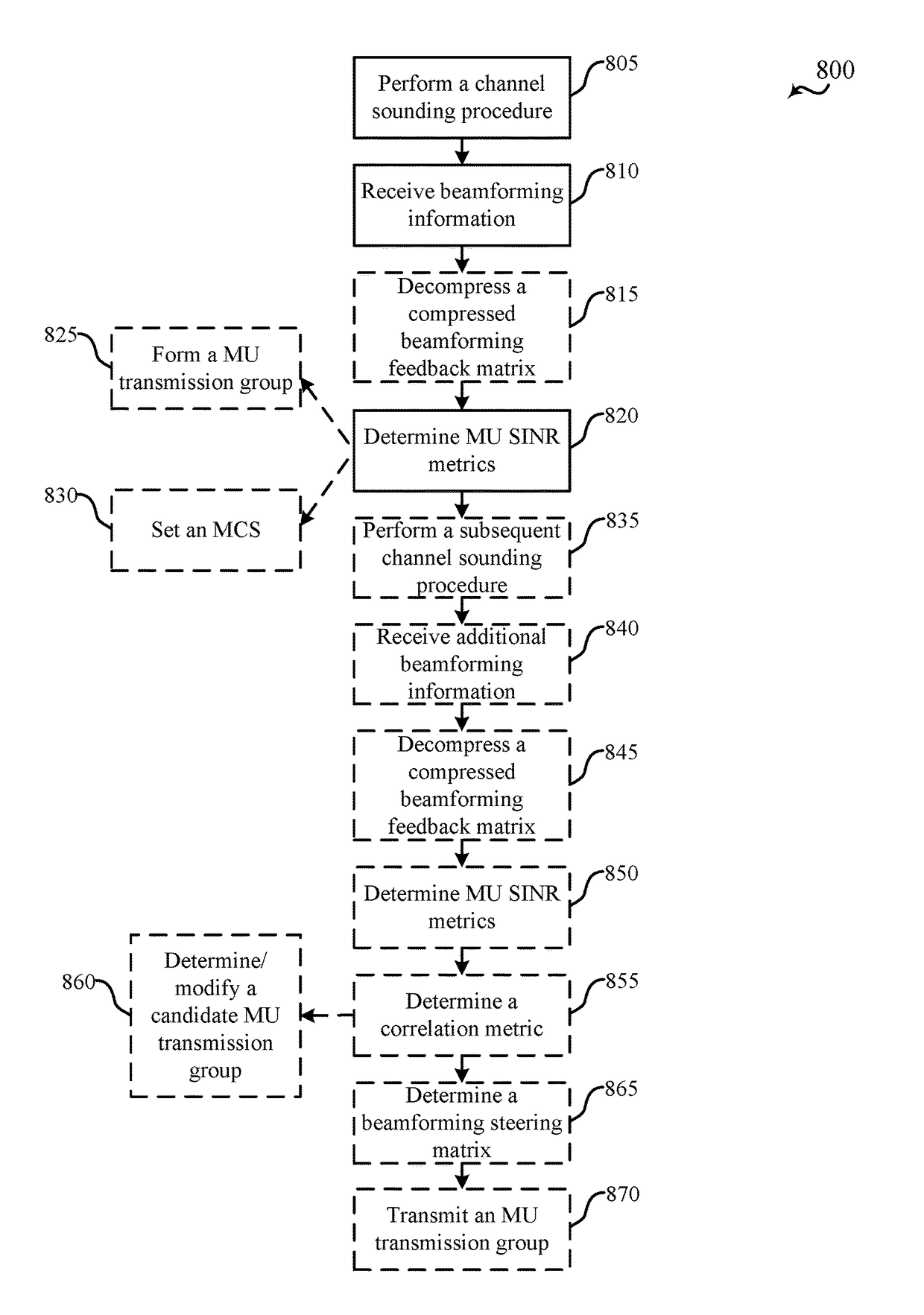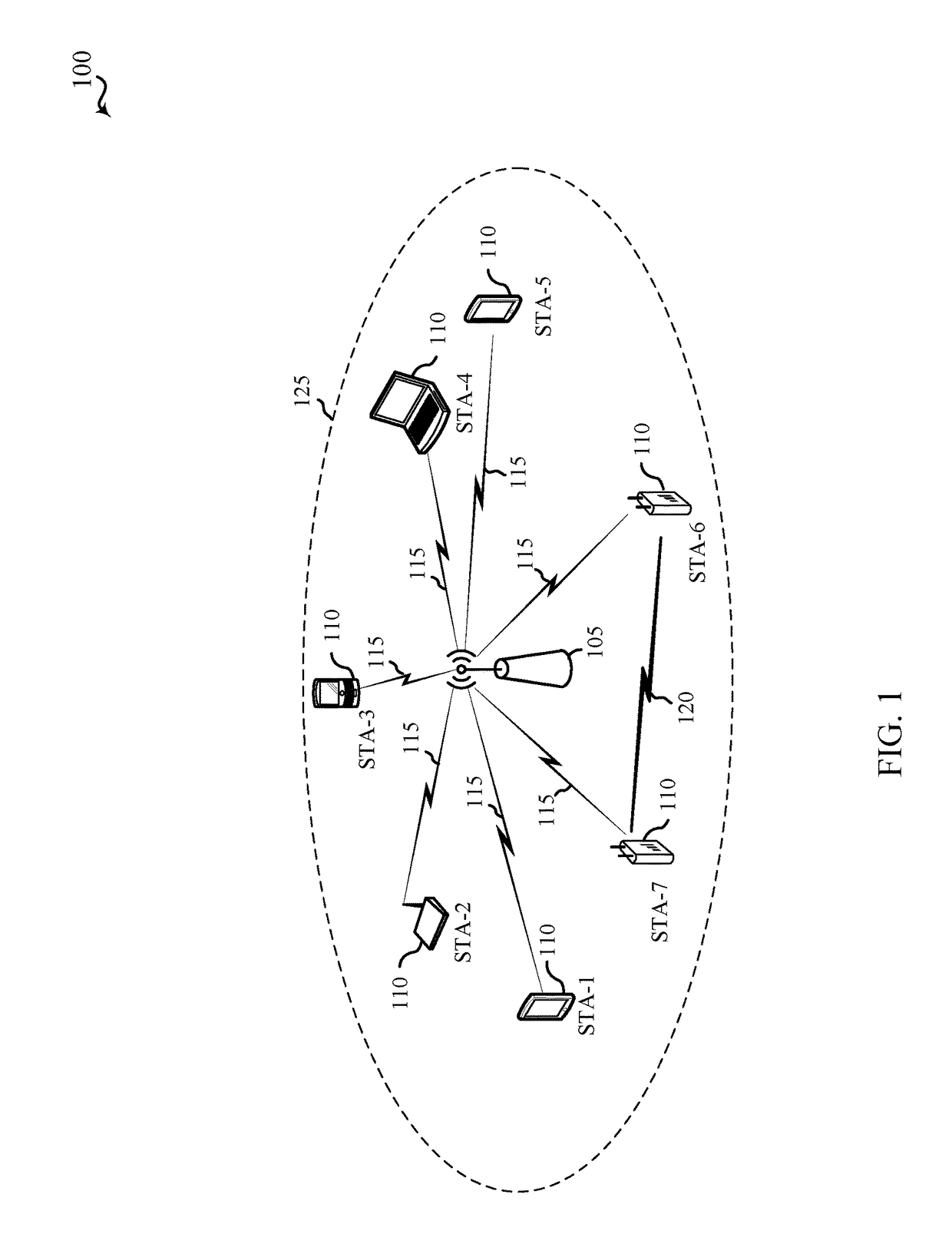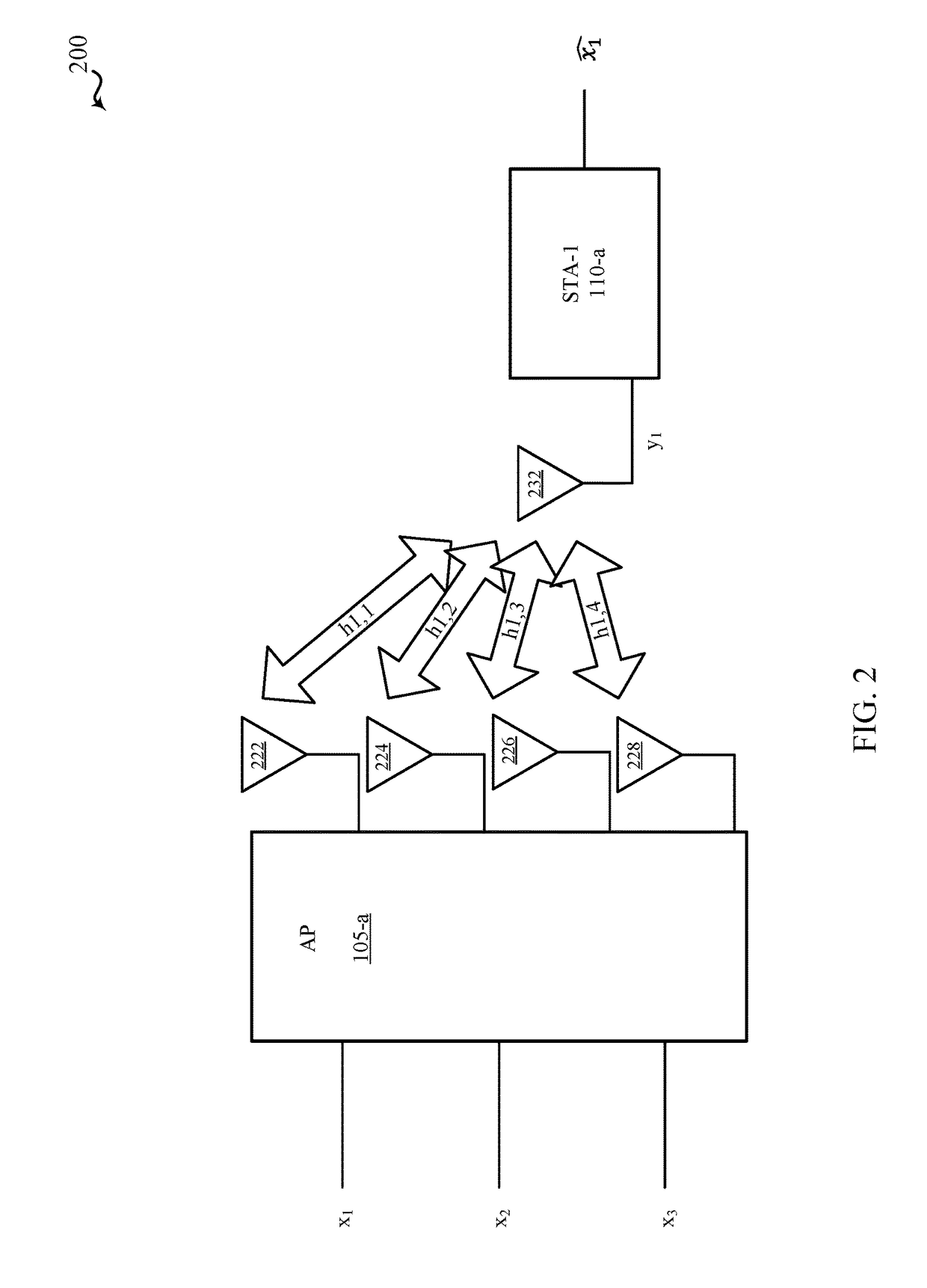Multi-user multiple-input-multiple-output grouping metrics
a multi-user, multi-output technology, applied in the field of wireless communication systems, can solve the problem that the error rate of the mu-mimo group may increase for the group, and achieve the effect of optimizing the mimo operation
- Summary
- Abstract
- Description
- Claims
- Application Information
AI Technical Summary
Benefits of technology
Problems solved by technology
Method used
Image
Examples
Embodiment Construction
[0025]According to aspects of the present disclosure, a wireless communication device, such as an access point (AP) utilizes techniques for using compressed or non-compressed beamforming information for optimizing multiple-input multiple-output (MIMO) operations. The AP estimates a multi-user (MU) signal-to-interference-plus-noise (SINR) metric for each station (STA) in a candidate MU group and uses the MU SINR metrics with respect to various MIMO operations. Additionally or alternatively, the AP determines grouping metrics for candidate MU-MIMO groups to enable selection of an optimal MU-MIMO group for each of one or more levels or orders (e.g., an optimal MU-2 group, MU-3 group, etc.). The AP determines the MU SINR metric for a particular STA, or a grouping metric for a particular candidate MU-MIMO group, based at least in part on compressed or non-compressed beamforming information associated with each STA in a candidate MU-MIMO group.
[0026]The beamforming information used by the...
PUM
 Login to View More
Login to View More Abstract
Description
Claims
Application Information
 Login to View More
Login to View More - R&D
- Intellectual Property
- Life Sciences
- Materials
- Tech Scout
- Unparalleled Data Quality
- Higher Quality Content
- 60% Fewer Hallucinations
Browse by: Latest US Patents, China's latest patents, Technical Efficacy Thesaurus, Application Domain, Technology Topic, Popular Technical Reports.
© 2025 PatSnap. All rights reserved.Legal|Privacy policy|Modern Slavery Act Transparency Statement|Sitemap|About US| Contact US: help@patsnap.com



